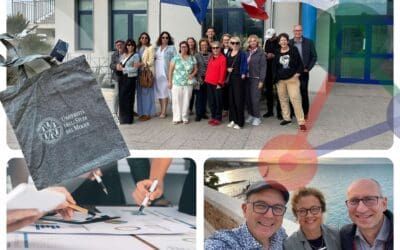Across Europe, labour markets are transforming at a pace that challenges even the most agile of education and training systems. Technological innovation, demographic change, the green transition and global competition are reshaping the types of skills that adults need to thrive. For adult learning providers, policy-makers and public institutions, keeping programmes aligned with this fast-changing reality is a constant challenge. This is where Cedefop’s future-oriented skills intelligence can provide informed direction.
Why skills forecasting matters
Adult education is not only about addressing today’s skills gaps but also about anticipating the needs of tomorrow. A forward-looking perspective helps avoid mismatches between the skills individuals acquire and those demanded by employers. Without reliable forecasting, training risks becoming outdated, limiting both employability for learners and competitiveness for companies.
For policy-makers, skills forecasts are essential for evidence-based decision-making. They allow governments to steer investment towards the sectors, occupations and competences that will define Europe’s future. For training institutions, they highlight where to adjust curricula, design new programmes, and develop modular pathways that can help adults continuously update their knowledge.
Focusing on future skills
The Cedefop Skills Forecast offers a comprehensive picture of Europe’s future labour market trends, serving as an early warning tool to prevent mismatches between skills supply and demand. It supports policy-makers, training providers and other labour market actors in making evidence-based decisions.
Background
First mandated in 2010 under the Council conclusions on New skills for new jobs: the way forward, the forecast is updated every two years. Unlike many national initiatives, it applies a harmonised methodology and data set across all EU Member States (and some additional countries) to ensure comparability. This common approach enables an aggregated EU-wide overview of labour market dynamics and emerging skill needs.
Synergies
The latest edition projects trends up to 2035, incorporating global economic developments up to autumn 2023. Short-term GDP assumptions align with the European Commission’s Ameco Autumn 2023 Economic Forecast, while long-term projections follow Europop 2023 population data as used in the 2024 Ageing Report. The long-term outlook has been adjusted to reflect the European Green Deal, drawing on evidence from the Fit-for-55 Impact Assessment.
Further links
- Cedefop Skill forecast
- Cedefop skills forecast – project page
- Skills forecast – Technical Report
- European Skills, Competences, Qualifications and Occupations (ESCO)
Learning about labour market needs
Skills-OVATE presents a rich, real-time snapshot of employer demand across Europe, drawn from millions of online job advertisements (OJAs) collected across 32 countries. Powered by collaborative work between Cedefop and Eurostat via the Web Intelligence Hub, the tool analyses postings from sources such as private and public employment services, recruitment agencies, company websites, and newspapers. Updated quarterly with data from the most recent four quarters. Offering annual averages through Cedefop’s Skills Intelligence portal Skills-OVATE allows users to explore a wide range of insights.
Digital and green transitions
The dashboards on Digital and Green transition are particularly valuable, as they highlight skills linked to Europe’s twin transition priorities. It is important to note, however, that online job vacancy data reflects current labour market demand rather than predicting future skill needs. Cedefop’s foresight studies on smart and green cities, as well as on the agri-food, waste management, and circular economy sectors, also identified cross-cutting skills. In the circular economy especially, experts emphasised the importance of empathy and systems thinking—key elements for fostering a circular mindset that go beyond the technical skills required for specific roles.
Further links
Skills intelligence in cohesive policies
Forecasts should not be seen as static predictions but as guiding instruments. They help anticipate trends, highlight uncertainties and encourage collaboration between education, labour market and industry stakeholders. Therefore, collaboration among stakeholders are vital in creating synergies and making skills intelligence a success for the long run.
How can adult learning stakeholders make the most of these tools?
- Policy-makers have a vital role to play in coordination. They can integrate the results of forecasts into national skills strategies, ensuring funding priorities reflect future-oriented sectors. Beyond integration, policy-making institutions may also benefit from taking part in the forecasting procedures by calling for participation of a wide range of national stakeholders (e.g. chambers of commerce, trade unions, or public employment services as well as more conventional institutions having a stake in adult learning).
- Public employment services can match jobseekers with vacancies more effectively, using OVATE data to refine guidance and training referrals.
- Adult education providers can embed forecasting results into curriculum design and develop flexible, modular learning opportunities tailored to emerging needs.
- Employers and chambers can engage in dialogue with training providers, ensuring that insights are translated into practice at company level.




